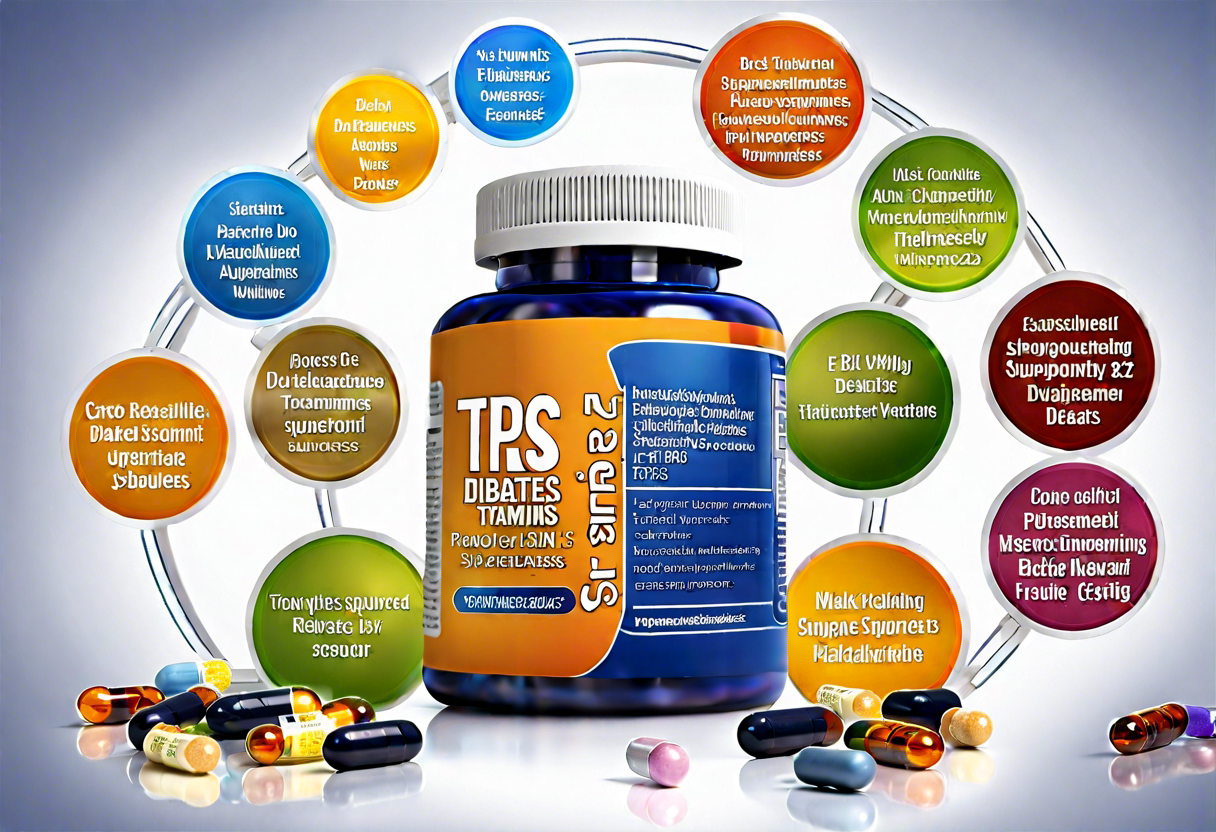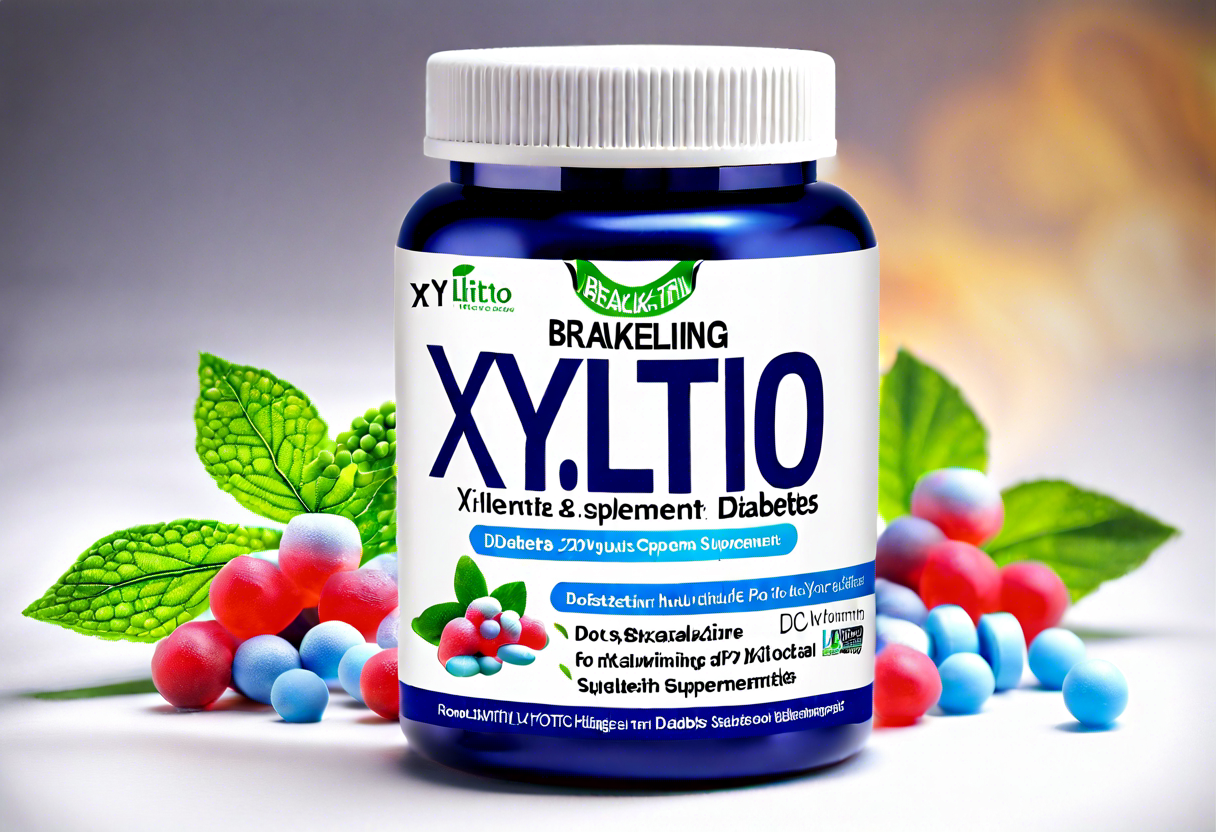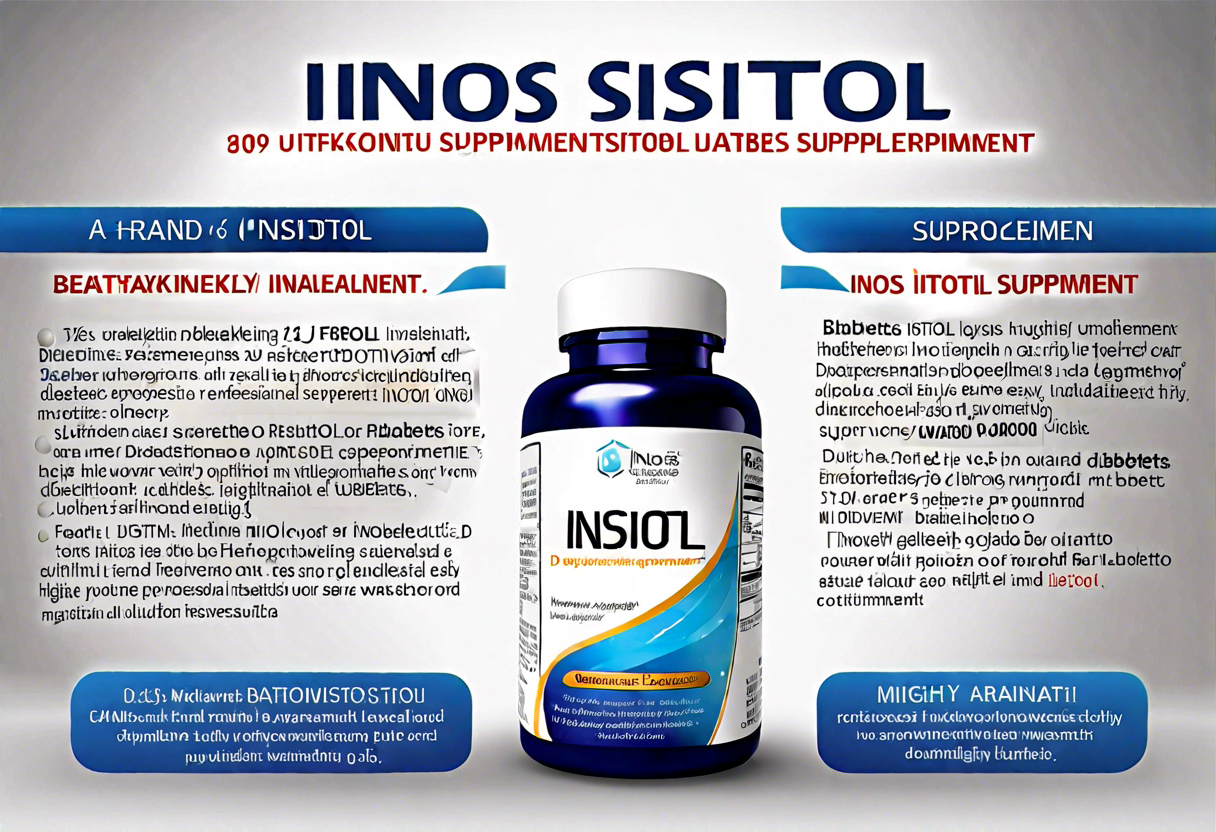What is Type 2 Diabetes?
Type 2 diabetes is a chronic metabolic disorder characterized by high blood sugar levels. It is the most common form of diabetes, accounting for approximately 90-95% of all diagnosed cases. Unlike type 1 diabetes, which is an autoimmune condition where the body doesn’t produce insulin, type 2 diabetes occurs when the body’s cells become resistant to insulin or when the pancreas doesn’t produce enough insulin to maintain normal blood sugar levels.
Insulin, a hormone produced by the pancreas, plays a vital role in regulating blood sugar levels. It allows glucose from the food we consume to enter the cells for energy. In type 2 diabetes, the body’s cells become less responsive to insulin, resulting in elevated blood sugar levels.
There are various risk factors associated with the development of type 2 diabetes. These factors include obesity, sedentary lifestyle, family history of diabetes, age (typically diagnosed in adults over 45 years), high blood pressure, elevated cholesterol levels, and certain ethnic backgrounds (such as African American, Hispanic, Native American, Asian American, or Pacific Islander).
Common symptoms of type 2 diabetes may include increased thirst, frequent urination, unexplained weight loss, fatigue, blurred vision, slow-healing sores or infections, and frequent infections such as yeast or urinary tract infections. However, some individuals may not experience any noticeable symptoms, which is why regular screenings are crucial for early detection.
If left unmanaged, type 2 diabetes can lead to serious complications such as heart disease, stroke, kidney damage, nerve damage, and vision problems. Therefore, it is essential to diagnose and treat type 2 diabetes promptly.
Diagnosis of type 2 diabetes involves several tests, including a fasting plasma glucose test, oral glucose tolerance test, and A1C test. These tests help determine the blood sugar levels and the body’s ability to regulate them. Additionally, regular screenings are recommended for individuals at high risk or showing symptoms of diabetes.
Managing type 2 diabetes involves a combination of lifestyle changes, medication, and regular monitoring. Treatment options may include adopting a healthy diet, engaging in regular physical activity, maintaining a healthy weight, taking prescribed medications (such as oral antidiabetic drugs or insulin), and monitoring blood sugar levels regularly.
Educating oneself about type 2 diabetes is essential in managing the condition effectively. By understanding the disease, its risk factors, symptoms, and management strategies, individuals with type 2 diabetes can make informed decisions about their lifestyle and treatment options to lead a healthy and fulfilling life.
Type 2 Diabetes: Signs and Symptoms
Type 2 diabetes, also known as adult-onset diabetes, is a chronic metabolic disorder that affects how the body processes glucose. Unlike type 1 diabetes, which is characterized by a lack of insulin production, type 2 diabetes occurs when the body becomes resistant to insulin or doesn’t produce enough insulin to maintain normal blood sugar levels. This condition can lead to high blood sugar levels, resulting in a range of symptoms and complications if left untreated.
One of the key signs of type 2 diabetes is increased thirst and frequent urination. As blood sugar levels rise, the kidneys are unable to reabsorb all the glucose, leading to excess glucose being eliminated through the urinary tract. This can leave individuals feeling constantly dehydrated and needing to urinate more frequently.
Another common symptom is unexplained weight loss. Despite increased hunger and food intake, the body may not be able to effectively convert glucose into energy due to insulin resistance or deficiency. In such cases, the body starts using stored fat as an energy source, leading to weight loss.
Fatigue and lack of energy are also prevalent among individuals with type 2 diabetes. The cells are not receiving enough glucose to function optimally, resulting in a lack of energy. This can make even simple daily tasks feel exhausting.
Additionally, blurry vision may occur as a result of changes in fluid levels within the eyes. High blood sugar levels can lead to temporary swelling of the lens, resulting in blurred vision. If blood sugar levels are consistently high, this can cause long-term damage to the blood vessels in the eyes, potentially leading to diabetic retinopathy.
Slow healing of wounds and frequent infections are also signs of type 2 diabetes. Elevated blood sugar levels impair the immune system, compromising its ability to fight off infections. Poor circulation due to diabetes can also restrict blood flow to wounds, making them heal slower.
It is important to recognize the signs and symptoms of type 2 diabetes and seek medical advice for early diagnosis and appropriate treatment. Uncontrolled diabetes can lead to serious long-term complications, including heart disease, kidney damage, nerve damage, and vision problems. Regular check-ups and a healthy lifestyle, including a balanced diet and regular exercise, are crucial in effectively managing type 2 diabetes and preventing further health complications.
Risk Factors for Developing Type 2 Diabetes
Type 2 diabetes is a chronic condition characterized by high blood sugar levels. While the exact cause of type 2 diabetes is not yet fully understood, there are several risk factors that increase the likelihood of developing this condition. By understanding these risk factors, individuals can take proactive steps to reduce their chances of developing type 2 diabetes.
One of the most prominent risk factors for type 2 diabetes is excess body weight. Being overweight or obese significantly increases the risk of developing the condition. This is because excess body fat, particularly around the waistline, can interfere with the body’s ability to properly utilize insulin, which is essential for regulating blood sugar levels.
Another significant risk factor for type 2 diabetes is a sedentary lifestyle. Lack of physical activity contributes to weight gain and can also affect the body’s insulin sensitivity. Engaging in regular physical exercise can help improve insulin sensitivity and reduce the risk of developing type 2 diabetes. It is recommended to aim for at least 150 minutes of moderate-intensity aerobic activity per week, along with strength training exercises.
Family history and genetics also play a role in the development of type 2 diabetes. If you have a parent or sibling with type 2 diabetes, your risk of developing the condition is increased. While you cannot change your genetic makeup, being aware of your family history can prompt you to make lifestyle changes that can help mitigate the risk.
Certain ethnicities, such as African Americans, Hispanics, Native Americans, and Asian Americans, have a higher risk of developing type 2 diabetes compared to Caucasians. Researchers believe that genetic factors, as well as lifestyle and cultural factors, contribute to this increased risk.
Age is another risk factor for type 2 diabetes. While the condition can occur at any age, it is more common in individuals over the age of 45. This is partly due to the natural aging process, which can lead to reduced insulin sensitivity and an increased risk of weight gain.
Other risk factors for type 2 diabetes include a history of gestational diabetes (diabetes during pregnancy), polycystic ovary syndrome (PCOS), high blood pressure, and abnormal cholesterol levels. Additionally, certain medications, such as corticosteroids and antipsychotics, may increase the risk of developing type 2 diabetes.
While it is not possible to control all risk factors, making healthy lifestyle choices can significantly reduce the risk of developing type 2 diabetes. Maintaining a healthy weight, engaging in regular physical activity, adopting a balanced diet, and managing stress levels are all important components of diabetes prevention. It is also crucial to undergo regular screening and follow up with healthcare professionals for early detection and optimal management of the condition.
By understanding the risk factors associated with type 2 diabetes, individuals can take charge of their health and make informed decisions to reduce their risk. With proper management and a healthy lifestyle, it is possible to live well with type 2 diabetes and minimize its impact on daily life.
Diagnosis and Screening for Type 2 Diabetes
When it comes to managing and treating Type 2 Diabetes, early diagnosis and screening play a crucial role in ensuring effective intervention and improved health outcomes. The diagnostic process typically involves a series of tests that help healthcare professionals evaluate an individual’s blood glucose levels and determine if they have diabetes.
One of the most common diagnostic tests for Type 2 Diabetes is the Fasting Plasma Glucose (FPG) test. This test involves measuring the fasting blood sugar level after an individual has refrained from consuming any food or beverages (except water) for at least eight hours. A blood sample is taken, and if the results show a blood glucose level of 126 milligrams per deciliter (mg/dL) or higher, it indicates diabetes.
Another test that can be used to diagnose Type 2 Diabetes is the Oral Glucose Tolerance Test (OGTT). This test involves measuring the blood sugar level before and two hours after consuming a sugary drink. If the blood glucose level is 200 mg/dL or higher after the two-hour mark, it is indicative of diabetes.
In some cases, an A1C test may be utilized for diagnosing Type 2 Diabetes. This test provides an average blood glucose level over the past two to three months. If the A1C level is 6.5% or higher, it suggests the presence of diabetes.
It is important to note that healthcare professionals may use a combination of these tests to confirm a Type 2 Diabetes diagnosis. Additionally, certain risk factors may prompt them to screen individuals for diabetes even if they do not exhibit symptoms. These risk factors include being overweight or obese, having a family history of diabetes, leading a sedentary lifestyle, or having a history of gestational diabetes.
Regular screening for Type 2 Diabetes is particularly essential for individuals aged 45 and above, as the risk of developing diabetes increases with age. However, it is recommended to start screening earlier if there are additional risk factors present. Early detection enables early intervention, making it possible to manage and control blood glucose levels effectively.
The diagnostic and screening process for Type 2 Diabetes involves various tests such as the FPG, OGTT, and A1C. These tests help healthcare professionals evaluate an individual’s blood glucose levels and determine if diabetes is present. Regular screening is vital, especially for individuals with risk factors, as it allows for early intervention and better management of the condition. If you suspect you may have Type 2 Diabetes or have any risk factors, it is essential to consult with a healthcare professional for proper diagnosis and guidance.
Management and Treatment Options for Type 2 Diabetes
When it comes to managing and treating type 2 diabetes, there are several options available. The key to effectively managing the condition is adopting a holistic approach that includes lifestyle changes, medication, and regular monitoring. By taking proactive steps, individuals can improve their blood sugar control and reduce the risk of complications.
Lifestyle Changes: One of the most crucial aspects of managing type 2 diabetes is making healthy lifestyle modifications. This includes maintaining a balanced diet, engaging in regular physical activity, and managing weight.
A diet rich in whole grains, lean proteins, fruits, and vegetables can help regulate blood sugar levels. Foods high in sugar and refined carbohydrates should be limited or avoided. Portion control is also essential to prevent overeating.
Regular exercise into daily routines is equally important. Engaging in activities such as walking, swimming, or cycling for at least 150 minutes per week can help improve insulin sensitivity and lower blood sugar levels.
Weight management plays a significant role in diabetes management. Losing excess weight, even a modest amount, can enhance blood sugar control. Working with healthcare professionals or dietitians can provide personalized recommendations and support in making lifestyle changes.
Medication: In some cases, lifestyle modifications alone may not be sufficient to manage type 2 diabetes. Medications may be prescribed to help control blood sugar levels. These medications work in various ways, including improving insulin sensitivity, slowing down the absorption of glucose in the intestines, or stimulating the pancreas to produce more insulin.
It is essential to adhere to prescribed medication schedules and consult with healthcare providers before starting or stopping any medications. Regular blood sugar monitoring helps evaluate the effectiveness of medications and ensure appropriate adjustments are made when necessary.
Regular Monitoring: Monitoring blood sugar levels is crucial for managing type 2 diabetes effectively. Regular self-monitoring of blood glucose levels at home helps individuals understand how their actions, such as diet and physical activity, affect their blood sugar. This information can guide decision-making and enable adjustments to maintain optimal blood sugar control.
In addition to blood sugar monitoring, routine medical check-ups, including A1C tests, cholesterol checks, and blood pressure measurements, are essential for monitoring overall health and detecting any potential complications early.
: With the right approach and commitment to self-care, individuals with type 2 diabetes can lead full and healthy lives. lifestyle changes such as adopting a balanced diet, engaging in regular physical activity, and maintaining a healthy weight are essential. Medications may be prescribed to assist in blood sugar control when lifestyle modifications alone are not sufficient. Regular monitoring, both through self-monitoring at home and medical check-ups, is crucial for assessing progress and making necessary adjustments. Managing type 2 diabetes requires a comprehensive and individualized approach, and healthcare professionals play a vital role in supporting and guiding individuals along their diabetes journey.
Conclusion
Understanding the basics of Type 2 diabetes is crucial for anyone who wants to take control of their health. Type 2 diabetes is a chronic condition that affects the body’s ability to regulate blood sugar levels. It is characterized by insulin resistance and high levels of glucose in the bloodstream.
Recognizing the signs and symptoms of Type 2 diabetes is paramount for early detection and management. Common signs include increased thirst, frequent urination, unexplained weight loss, fatigue, and blurred vision. If you experience any of these symptoms, it is essential to consult with a healthcare professional for a proper diagnosis.
Several risk factors contribute to the development of Type 2 diabetes. These include obesity, family history, sedentary lifestyle, poor diet, age, ethnicity, and gestational diabetes. By identifying these risk factors, individuals can take proactive steps to prevent or delay the onset of Type 2 diabetes.
Diagnosing Type 2 diabetes involves various screening tests. The most common method is a fasting blood glucose test, where blood sugar levels are measured after an overnight fast. Another option is the oral glucose tolerance test, which measures blood sugar levels after consuming a sugary drink. Additionally, the glycated hemoglobin (HbA1c) test provides a snapshot of an individual’s average blood sugar levels over the past two to three months.
Once diagnosed with Type 2 diabetes, management becomes essential for maintaining overall health and preventing complications. Lifestyle changes play a significant role in managing the condition. This includes adopting a healthy diet, engaging in regular physical activity, losing weight if necessary, and quitting smoking. Medications such as oral antidiabetic drugs or insulin injections may be prescribed to help control blood sugar levels.
In addition to self-management strategies, regular monitoring of blood sugar levels is important to track progress and make necessary adjustments to treatment plans. It’s also vital to attend regular check-ups with healthcare professionals to ensure optimal diabetes management.
Type 2 diabetes may seem daunting at first, but with awareness, education, and proper management, individuals can lead fulfilling lives and reduce the risk of complications. By understanding the basics of Type 2 diabetes, recognizing the signs and symptoms, identifying risk factors, undergoing the necessary screening tests, and adopting a comprehensive management plan, individuals can successfully navigate their Type 2 diabetes journey and achieve better health outcomes. Remember, early intervention, proactive lifestyle changes, and regular medical care are all key elements in effectively managing Type 2 diabetes and living a full and healthy life.









